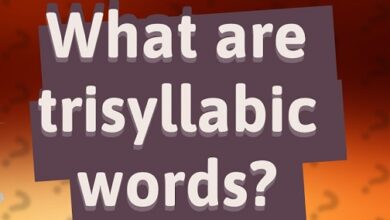Concepts of phonology
Phonology is one of the pillars of the Portuguese language, and this subject is taught in the early school years. For all the details on this subject, Concepts of phonology
What is phonology?
This word has Greek origin, being: fon(o) = sound + logia = study. In this way, phonology is a part of grammar that is dedicated to the study of the sound system of the language. That is, it studies the way in which phonemes are organized and articulated in syllables. It is important to emphasize that phonetics and phonology are complementary areas of linguistics in the field of analysis of sounds corresponding to speech.
Basic concepts of phonology
To understand the importance of this area of grammar, let’s look at all the subjects studied in the field of phonology .
phonemes and letters
The phoneme is classified as the smallest sound unit that can be isolated within a word, and the phoneme has the property of distinguishing between words in a language.
digraphs
Also called a digraph, the digraph consists of the meeting of two letters in order to represent a single phoneme, and the digraphs can be vowel or consonant.
Vowels
They consist of phonemes that are the result of the free passage of the air stream through the mouth, or through the mouth and at the same time through the nasal cavities.
glides
They consist of the phonemes j and w , whose articulation is similar to that of vowels and which join a vowel to form a syllable with it. These phonemes are represented by the letters i and u , and in some words they can be represented by the letters e and o .
Consonants
These are phonemes that result from some obstacle encountered by the air current. They only form a syllable when supported by a vowel. Note: phoneme is not the same as letter. The phoneme is a sound unit that takes place in speech, while the letter is only the graphic representation of the phoneme.
Syllable
Syllables consist of the intermediate units of words, with the phoneme or group of phonemes being pronounced (s) only in a voice utterance.
Syllables, in turn, can be classified into:
- Monosyllables (when there is only one syllable);
- Disyllables (when there are two syllables);
- Trisyllabic (when there are three syllables);
- Polysyllables (when there are more than three syllables).
unstressed syllable and stressed syllable
The stressed syllable consists of the syllable of the word that receives the tonic accent, that is, it is the one that is pronounced with greater intensity. Because the stressed syllable is not always indicated with a graphic accent, it is necessary to distinguish the tonic accent from the graphic accent.
- Tonic accent = speech accent. It is manifested by the greater intensity of the voice during the pronunciation of a syllable.
- Graphic accent = sign used, in some words, to indicate the stressed syllable.
With respect to the stressed syllable position, according to phonology , words can be classified into:
- Oxytone (when the stressed syllable is the last syllable of the word);
- Paroxytones (when the stressed syllable is the penultimate syllable of the word);
- Proparoxytones (when the stressed syllable is the antepenultimate syllable of the word).
Unstressed and stressed monosyllables
Unstressed monosyllables do not have their own accent, that is, they are pronounced with low intensity within the sentence. Stressed monosyllables have their own accentuation, that is, they are pronounced with great intensity within the sentence.
vowel encounters
Vowel clusters are groupings of vowels or of vowels and semivowels without an intermediate consonant.
Diphthong
It consists of the meeting of a vowel and a semivowel, or vice versa, in which the vowel and semivowel belong to the same syllable.
Triphthong
It is the meeting of semivowel = vowel = semivowel, exactly in that order, and in triphthongs the semivowels and the vowel belong to the same syllable. Note: Triphthongs can be oral and nasal.
Gap
It is the immediate encounter of two vowels, and the vowels that form the gaps belong to different syllables.
consonant encounters
These are groups formed by more than one consonant without an intermediate vowel. Consonant clusters can be classified into: perfect and imperfect.
With all this information about phonology , it is easy to understand how important the study of this area is, being the basis for understanding the Portuguese language. To fix the learning even more, it is recommended to make lists of specific exercises on the items studied. Concepts of phonology

